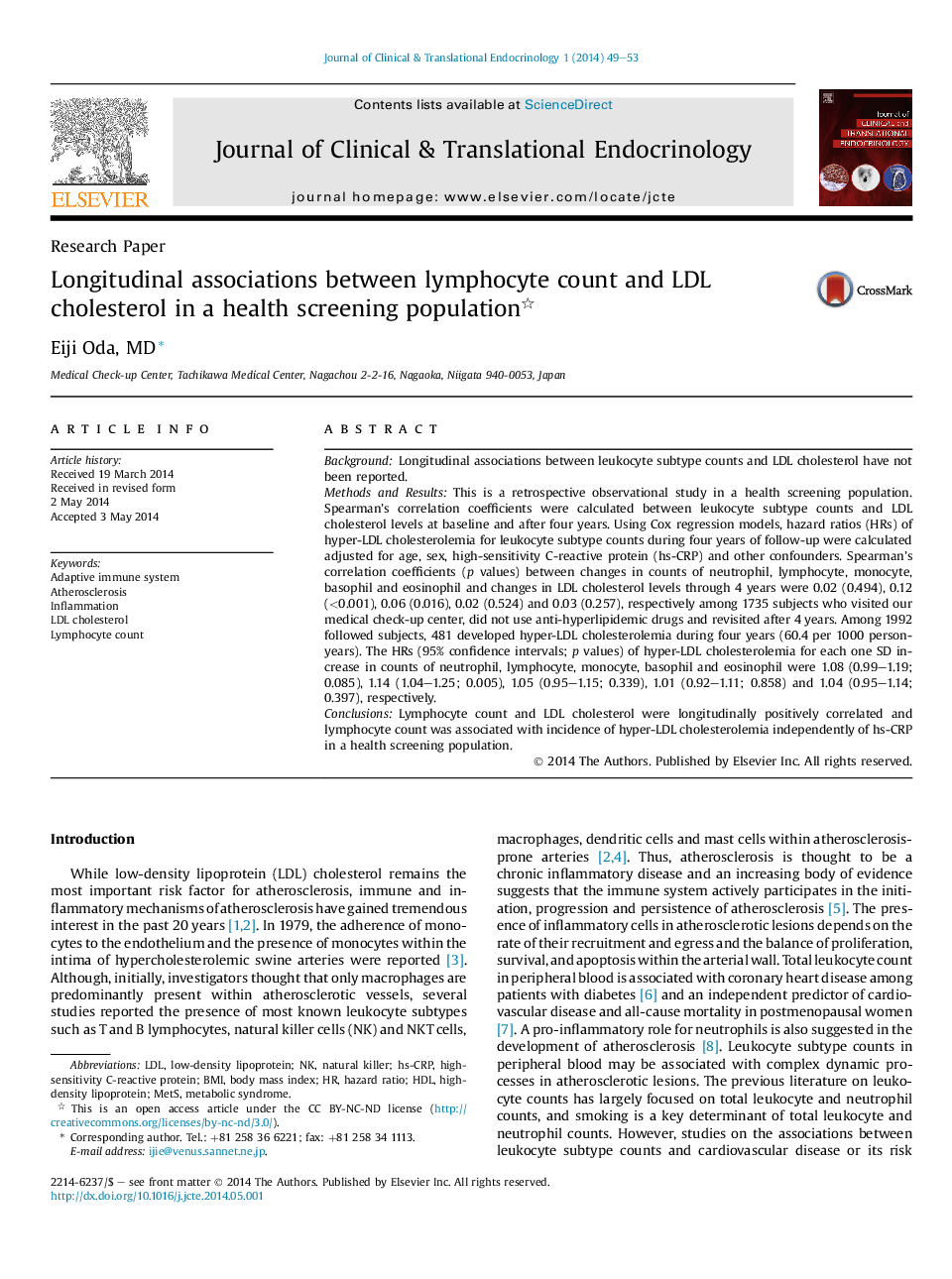| Article ID | Journal | Published Year | Pages | File Type |
|---|---|---|---|---|
| 2804065 | Journal of Clinical & Translational Endocrinology | 2014 | 5 Pages |
BackgroundLongitudinal associations between leukocyte subtype counts and LDL cholesterol have not been reported.Methods and ResultsThis is a retrospective observational study in a health screening population. Spearman's correlation coefficients were calculated between leukocyte subtype counts and LDL cholesterol levels at baseline and after four years. Using Cox regression models, hazard ratios (HRs) of hyper-LDL cholesterolemia for leukocyte subtype counts during four years of follow-up were calculated adjusted for age, sex, high-sensitivity C-reactive protein (hs-CRP) and other confounders. Spearman's correlation coefficients (p values) between changes in counts of neutrophil, lymphocyte, monocyte, basophil and eosinophil and changes in LDL cholesterol levels through 4 years were 0.02 (0.494), 0.12 (<0.001), 0.06 (0.016), 0.02 (0.524) and 0.03 (0.257), respectively among 1735 subjects who visited our medical check-up center, did not use anti-hyperlipidemic drugs and revisited after 4 years. Among 1992 followed subjects, 481 developed hyper-LDL cholesterolemia during four years (60.4 per 1000 person-years). The HRs (95% confidence intervals; p values) of hyper-LDL cholesterolemia for each one SD increase in counts of neutrophil, lymphocyte, monocyte, basophil and eosinophil were 1.08 (0.99–1.19; 0.085), 1.14 (1.04–1.25; 0.005), 1.05 (0.95–1.15; 0.339), 1.01 (0.92–1.11; 0.858) and 1.04 (0.95–1.14; 0.397), respectively.ConclusionsLymphocyte count and LDL cholesterol were longitudinally positively correlated and lymphocyte count was associated with incidence of hyper-LDL cholesterolemia independently of hs-CRP in a health screening population.
